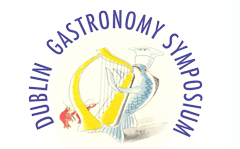Start Date
28-5-2024 11:15 AM
End Date
28-5-2024 11:30 AM
Description
Lower Silesia, Poland, is a region that experienced almost a total change of population after 1945. Often described as a region of uprooted people and without its own identity and traditions, the regionality of its food presents in fact a particular phenomenon of transplanted and re-invented traditions. Foods declared regional culinary heritage or traditions in the last few decades are mostly either those brought by the ancestors of today's Lower Silesians who migrated here, or traditions related to the place, re-created and carried on even without the population in which they originally evolved. Accordingly, regionality is defined by social or territorial criteria. Trying to make sense of the traumatic history of their region, the Lower Silesians construct multilayer foodways and re-invent traditions of their region. Along with the mélange of the traditions from other Polish regions and several ethnic minorities, a nostalgia for the cuisines of the former Polish Eastern Borderlands is particularly cherished. At the same time, more and more traditions of German Silesians or Medieval Silesia are being revived and reintroduced into the local foodways. These strategies, not specific to this region alone, allow for a construction of a food regionality rooted in older traditions, even though the continuity of place or population are disrupted.
Creative Commons License

This work is licensed under a Creative Commons Attribution-NonCommercial-Share Alike 4.0 International License.
DOI
https://doi.org/10.21427/0jbh-0p70
The Challenging Food Regionality in Lower Silesia: Between Nostalgia and Innovation
Lower Silesia, Poland, is a region that experienced almost a total change of population after 1945. Often described as a region of uprooted people and without its own identity and traditions, the regionality of its food presents in fact a particular phenomenon of transplanted and re-invented traditions. Foods declared regional culinary heritage or traditions in the last few decades are mostly either those brought by the ancestors of today's Lower Silesians who migrated here, or traditions related to the place, re-created and carried on even without the population in which they originally evolved. Accordingly, regionality is defined by social or territorial criteria. Trying to make sense of the traumatic history of their region, the Lower Silesians construct multilayer foodways and re-invent traditions of their region. Along with the mélange of the traditions from other Polish regions and several ethnic minorities, a nostalgia for the cuisines of the former Polish Eastern Borderlands is particularly cherished. At the same time, more and more traditions of German Silesians or Medieval Silesia are being revived and reintroduced into the local foodways. These strategies, not specific to this region alone, allow for a construction of a food regionality rooted in older traditions, even though the continuity of place or population are disrupted.
